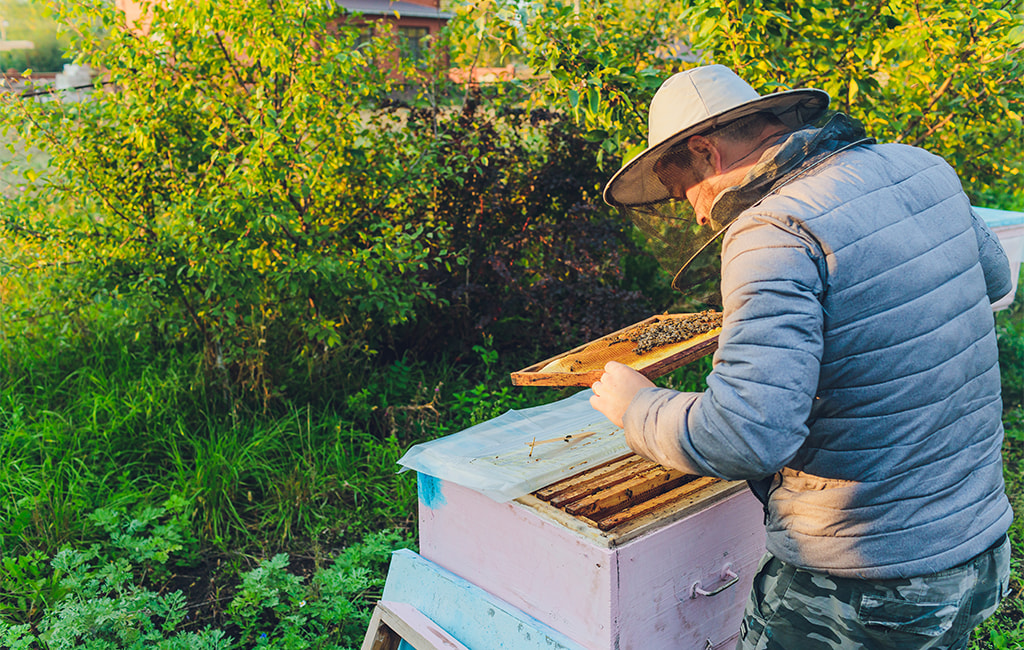There can be nothing more satisfying than to know that what you eat comes from a clean source. In other words, once we know how and where our food is grown, we are much more at ease because of the assurance that we are eating clean. The moment we know that particular food comes from a place surrounded by contaminated soil or water, we would not want to consume that food.
Food is not just our source of energy and nutrition, but it is also our direct connection with nature. So, it won't be wrong to say that growing your food is an experience like none other. You are not just aware of every aspect of the food. Still, you are also deeply immersed in the whole process, from sowing the seed to watering it, nurturing it, and eventually, when the vegetable is grown enough, you are ready to harvest it. It is both a spiritual and creative process. The journey of a vegetable, grain, seed to food is one that you have been a part of yourself and, in a way, carved out the path yourself over for a while, sometimes bathing in sunlight and at times rain. Any and everybody can have this life-changing experience without worrying about how complicated it can be. Any and everybody can actually have this life changing experience without having to worry about how complicated it can be.
Growing your own vegetables is not complicated. It can be achieved in a few simple steps. At Good Living Trust, we aim to live by example. We have recently used the raised soil bed method to grow vegetables and the results have been quite good.
As part of our mission to help set up model villages, the raised soil bed is an excellent technique for farmers whose soil quality is inferior and lacks nutrients and organic matter in the initial years of natural Farming. The entire process is straightforward and, more importantly, easy to maintain.
To ensure sustainability, everything used in raised bed cultivation is locally sourced.
-
The cost-effective utilization of local materials like Mangalore tiles as sidewalls for beds is an excellent example of sustainability
-
Dry leaf collection is part of social work, which acts as a cheap source of organic matter preservation
-
We have effectively utilized red earth from the land of local villagers to ensure that the crops grown get all the soil's nutritional benefits, which is apt for the climatic condition of the area.
The raised bed requires a 6-layer model
The first layer or the bottom layer is the green manure which takes a long time for decomposition.
The third layer has organic matter that decomposes faster than green manure
In the fifth layer, we add nutrient manure.
When the seeds start to germinate, farmyard manure starts to feed. When the roots reach the dry matter, it rots and starts releasing nutrients to plants. When plants get older and go to the bottom layer, green manure rots and starts releasing nutrients to plants.
The benefits of raised bed cultivation include:
-
The reduced cost and effort of labor
-
Efficient use of interspace between two rows of fruit trees where vegetables can be cultivated
-
Usage of barren lands while the land is under organic conversion
-
Keeps critters and weeds out
-
Grows more in lesser space
-
Keeps contaminated soil away from your vegetables
The raised bed cultivation technique also helps achieve self-sustenance before main crops start to yield.
Almost all kinds of vegetables can be grown in raised bed cropping—tomatoes, beans, lettuce, various green leafy vegetables, capsicum, brinjal, etc. One very crucial aspect to remember is how much to water the plants. The frequency of watering needs to change as per season. During summer, when the heat is intense, mulching can keep the soil moisture from evaporating, and vegetables can be grown without watering the soil heavily. One can opt for drip water irrigation or can choose to manually water. Both options work well.
Raised-bed gardens are constructed in a manner that they are well-drained. Overwatering can rot the roots. Since more plants are grown per square foot, it is essential to ensure that water is sufficient and drains the roots.
There are many ways of growing your food apart from raised bed technique which we will discover and discuss in our upcoming blogs.
Most Viewed Posts

Buzzing Towards Sustainability: Honeybee Cultivation in Sulikunte
Read More
Little Hands, Big Impact Afforestation Drive with Kids at Chennaveranahalli
Read More
Sacred Flow Cleanup Campaign A Landmark in Sacred Environmental Action
Read More
Growing Green Minds A Plastic Free Session at Chennaveeranahalli High School
Read More
Towards a Cleaner and Greener Future
Read MoreCategories
23
1
Leave a Comment